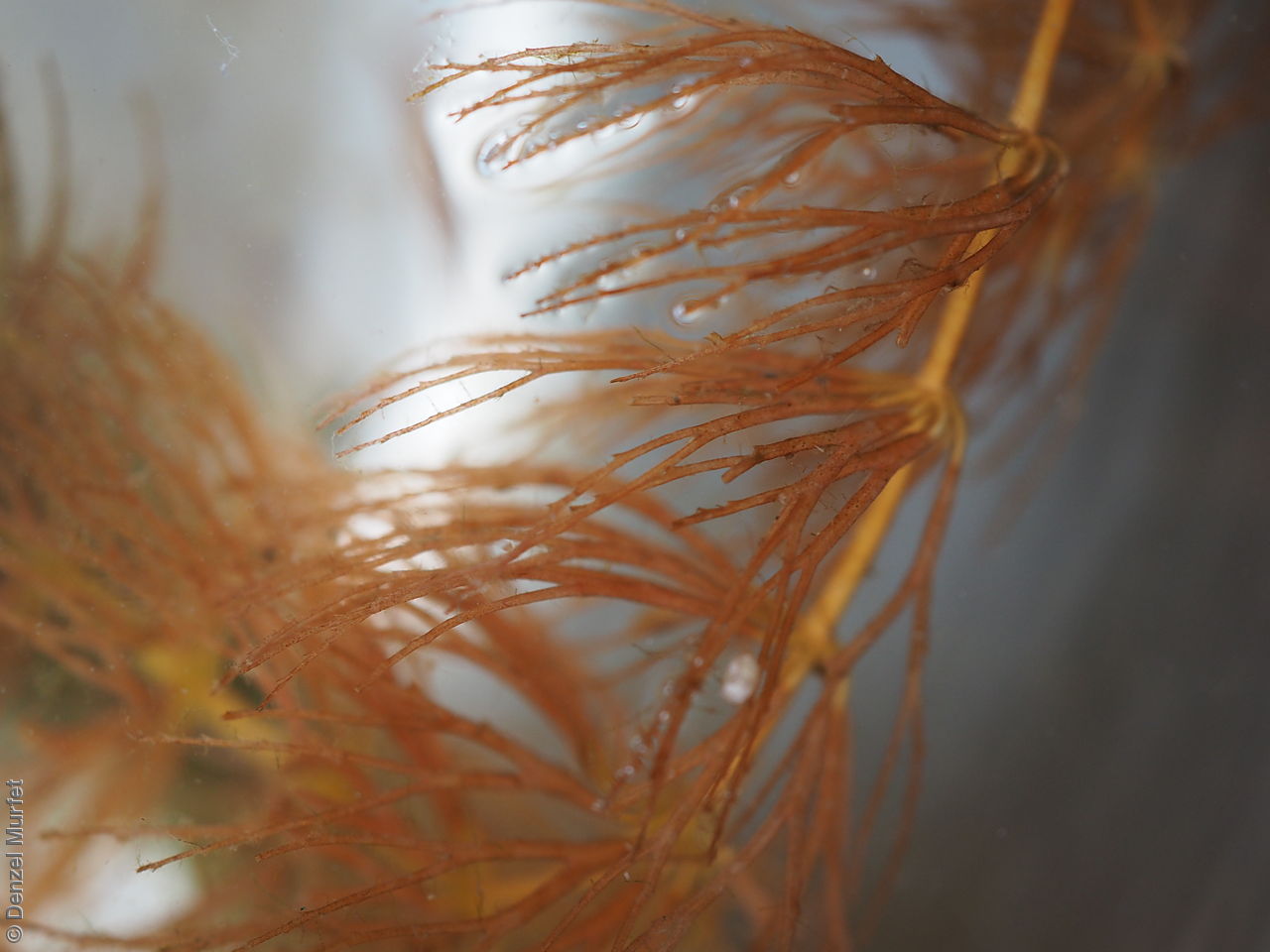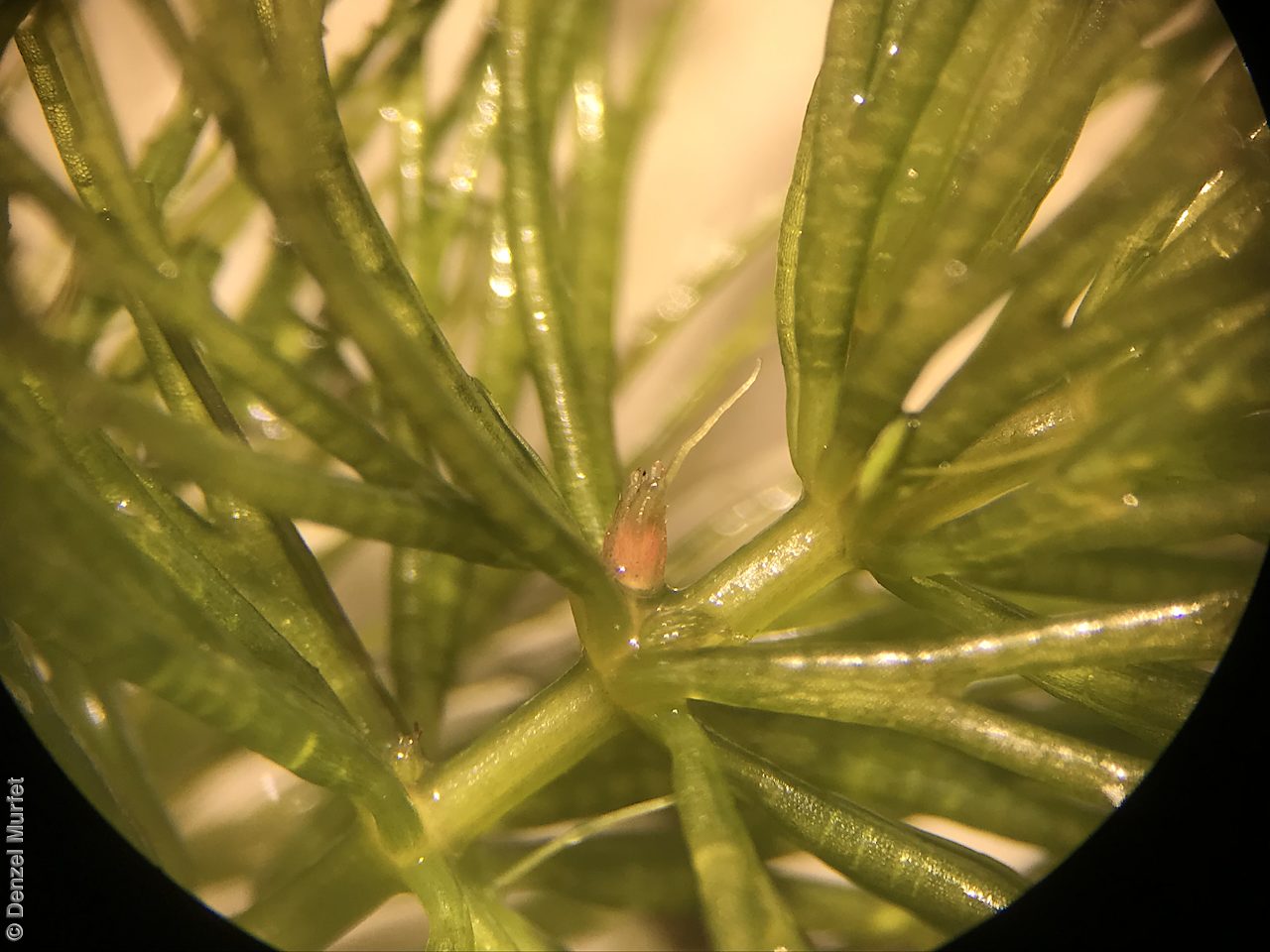













Botanical art
Etymology
Ceratophyllum from the Greek keras' meaning horn and 'phyllon' meaning leaf, alluding to the horn-like divisions of the leaves. Demersum from Latin meaning submerged, referring to its under water habitat.
Distribution and status
Found around Lake Alexandra and along Murray River in South Australia, growing in lakes, ponds, and quiet streams with a rich nutrient status. There is one record away from the Murray system, collected from the South Para Reservoir in creek by main bridge. Also found in all mainland states (and other part of the world). Native. Uncommon in South Australia. Uncommon in Western Australia and Victoria. Common in the states.
Herbarium regions: Murray, Southern Lofty, South Eastern, Green Adelaide
NRM region: South Australian Murray-Darling Basin
AVH map: SA distribution map (external link)
Plant description
Submerged unattached herb with no true roots. Stems may grouped together and anchored to form a background plant, but portions of the stem buried in the substrate will die and the plant stems will float unless weighed down. Stems can reach a length of more than one metre. plant may form rhizoids that are not true roots but do serve to anchor the stem. Leaves in whorls of 3-8, once to thrice forked into linear segments. This species is superficially similar to Myriophyllum which have leaves that are divided pinnately rather than dichotomously. Flowers are small, 2 mm long, with eight or more greenish-brown petals; they are produced in the leaf axils. Flowering between January and February. Fruit a small black nut to 5 mm long, usually with three spines, 1 terminal and 2 laterally, one or both of the basal spines may only partially develop.